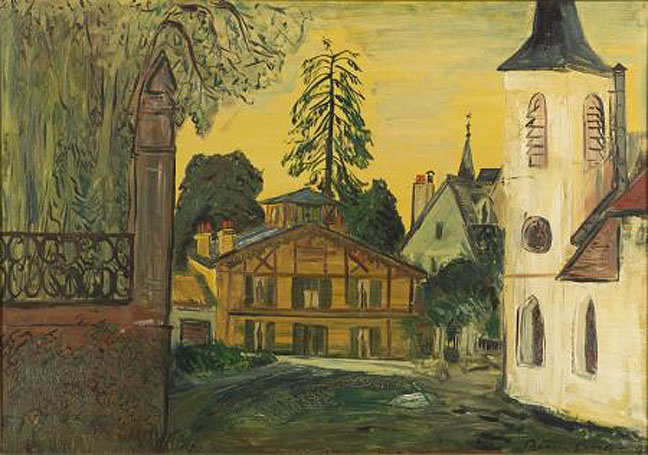“Marly Horses,” paired sculptures also sometimes known as “horse tamers,” or just “horses restrained by grooms,” have their origins in France, probably by way of ancient Rome. Since the early days of Rome, a pair of sculptures, each of a man with a horse, have been on Quirinal Hill in the city. The spirited horses and the men seeking to control them are a discourse on power that has appealed to various political figures throughout history, and the theme has been replicated frequently.

A pair of bronze Marly horses. (p4A item # D9812387)
After Louis XIV decided to convert the royal hunting lodge into what is now Versailles, there was a need for a new location for the Royal Hunt. Louis opted for an area on the edge of the royal lands where he set about constructing the Chateau de Marly. (The neighboring community that sprang up to serve the needs of the royal family, Marly-le-Roi, is today a suburban community of Paris.) Chateau de Marly remained a popular retreat for the royal family, a respite from the social formalities (and the constant construction and remodeling) of the palace at Versailles. Although Marly’s golden age was during the rule of Louis XIV, both Louis XIV and Louis XV made continual improvements and changes to the Chateau, especially to the grounds, which were well-watered and lent themselves to elaborate waterworks. (In fact, after the construction of a hydraulic machine, Marly supplied water to Versailles and its famous fountains.)

A Ludwig Bemelmans painting of the village of Marly-le-Roi from 1957. (p4A item # D9943544)
Louis XV commissioned Guillaume Coustou the Elder (November 29, 1677 to February 22, 1746), a sculptor who had already contributed several statues to the Marly grounds, to create a pair of sculptures to flank the horse trough or pond in Chateau de Marly’s park. The works, carved from a single block of marble, were completed in an astoundingly short period – just two years! They were installed in 1745.
Sadly, Marly’s fate was linked to the fate of the royal family. Damage was done during the French Revolution, and the property was sold around 1800. The chateau was completely demolished and sold off in pieces, but Napoleon later bought back the estate, so while the chateau is no longer there, the park still exists. The Chevaux de Marly (Horses of Marly) statues, completed in 1745, were moved in 1795 to Place de la Concorde, the square in Paris where the guillotine had been in operation during the French Revolution’s Reign of Terror, as part of a post-revolution makeover. (The Champs-Elysees runs between Place de la Concorde with the Chevaux de Marly and the Obelisk of Luxor in the east to the Place Charles de Gaulle with the Arc de Triomphe in the west.)
The Marly Horses remained in the Place de la Concorde for almost two centuries, until they were moved to the Musee de Louvre in 1984, where other Marly sculptures are now housed. There, they have been conserved, and cement copies have been placed both in the Place de la Concorde and in the grounds at Marly.
The motion and dramatic moment captured in Coustou’s works along with their prominent iconic placement in Paris made the sculptures immensely popular, and throughout the nineteenth century, numerous versions were replicated in bronze and smelter on a smaller scale for Victorian homes.



